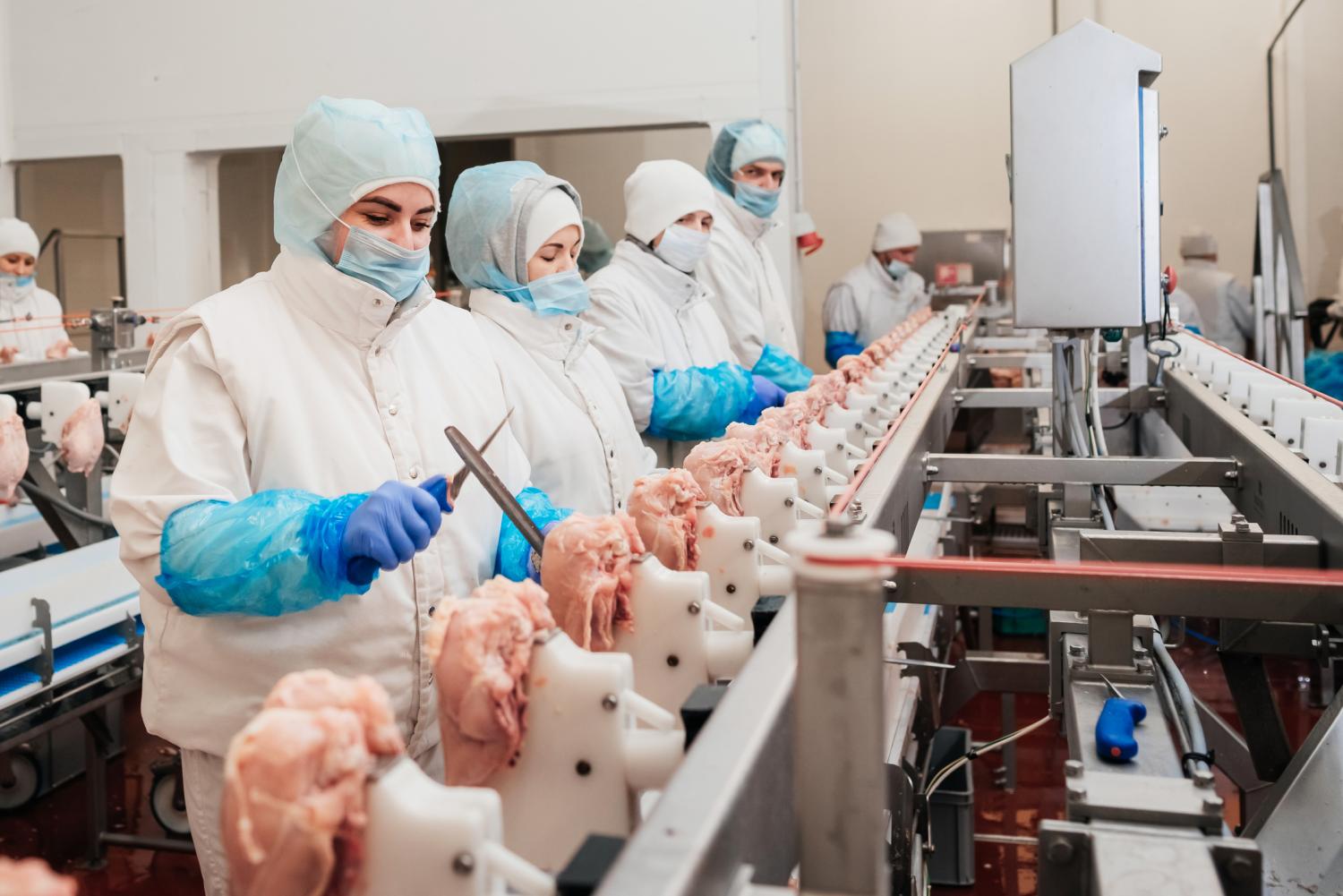[Editor's note: A correction was made in this story on Feb 2, 2024, to eliminate a quote misstating former President Donald Trump's use of the Defense Production Act.]
Thousands of frontline workers may have survived the COVID-19 pandemic if the US regulatory system had better protected them, report the authors of an analysis published yesterday in BMJ.
The study is the first in a series that discusses the lessons learned from COVID-19 and the steps needed to avert deaths in the next pandemic and improve public health.
Frontline workers are those who couldn't work from home and thus were at higher risk of exposure to SARS-CoV-2. Black and Hispanic workers and immigrants make up high proportions of "essential" workers, or those in healthcare, meatpacking plants, agricultural production, and public transportation.
"Federal policies on workplace exposure were developed to protect the supply chain of food or other vital products, or to prevent staff shortages at healthcare facilities, rather than to protect frontline workers from virus exposure," wrote the George Washington University–led study authors. "Some employers, with the support (and encouragement) of elected officials, put production and profits ahead of worker safety and health."
'A perfect storm for vulnerable workers'
The study authors said social, legal, and economic provisions for low-wage workers were weak even before the pandemic, noting that the United States is one of only six countries without a national paid sick-leave policy and the only country in the 37-nation Organization for Economic Co-operation and Development without a national health insurance program.
Some employers, with the support (and encouragement) of elected officials, put production and profits ahead of worker safety and health.
Frontline workers "were more likely to have precarious work arrangements with unpredictable scheduling and less control over the conditions of work," they wrote. "This lack of underlying protections created a perfect storm for vulnerable workers that was only partially mitigated by emergency measures during the early stages of the pandemic."
Governmental social and economic protections during the pandemic (eg, stimulus checks, expansion of the federal child tax credit) gave workers some financial relief and better access to health insurance and to COVID-19 testing and care, averting some infections, hospitalizations, and deaths, the authors said.
But the US Occupational Safety and Health Administration (OSHA) continued to have limited authority. "On a national level, OSHA has only enough inspectors to visit every workplace once every 190 years," they wrote. "So many of the agency's standards are insufficiently protective that it has taken the unusual step of recommending that employers adhere to standards developed by other agencies and organisations."
CDC adherence to droplet dogma limited response
In addition, guidance from the Centers for Disease Control and Prevention (CDC) promulgated the disproven idea that SARS-CoV-2 was primarily transmitted through droplets and didn't incorporate traditional OSHA strategies for controlling airborne exposures (eg, ventilation, air cleaning).
CDC's insistence that the virus could be controlled by limiting exposure to droplets through surgical masks, distancing, and handwashing contributed to OSHA's inability to promote optimal control measures.
"It is now clear that the CDC (as well as the World Health Organization) erred in clinging to the droplet dogma," the study authors wrote. "CDC's insistence that the virus could be controlled by limiting exposure to droplets through surgical masks, distancing, and handwashing contributed to OSHA's inability to promote optimal control measures."
Workers also had very limited access to personal protective equipment (PPE) early in the pandemic and faced reprisal for complaining about the lack of protections. When OSHA received thousands of worker complaints, it responded to only a tiny proportion of them and levied small fines that the authors said likely had little deterrent effect.
Researchers propose governmental action plan
The researchers recommend a multipronged action plan to address future pandemic threats, starting with OSHA issuing two new standards on preventing workplace exposure to airborne pathogens and requiring employers to develop and implement plans to protect workers through the provision of PPE, vaccines, and other protective interventions. OSHA should also require employers covered by the airborne standard to provide paid medical leave, they said.
Other recommendations include:
- Establishment of universal paid leave to allow employees to stay home when ill
- Updating local building codes to require improved performance of heating, ventilation, and air conditioning (HVAC) systems and requiring building owners and operators to provide building tenants, workers, and guests with data showing the effectiveness of the HVAC systems
- OSHA issuance of a broad safety and health management standard that requires worker participation in workplace risk assessment and abatement activities and improves protections against retaliation for whistleblowers
- Improved data-collection systems, with sharing across worker safety agencies and health departments to identify workplaces and industries in which workers are at increased risk
- Congressional enablement of OSHA to develop a faster, nimbler standard-setting process, provide more inspection resources, and expand its ability to issue civil and criminal penalties with greater deterrent effects
- Restoration of pandemic cash payments, tax credits, increased healthcare insurance, and other actions that improved the lives of workers and their families, made workplaces safer, and addressed social inequality
"The consequences of these failures were appalling and led to tens of thousands of deaths in frontline workers," lead author David Michaels, PhD, MPH, professor at the George Washington University School of Public Health and former OSHA administrator, said in a university news release. "The risk of exposure was exacerbated by race- and labor-related economic inequality, resulting in disproportionally more of the nation’s Black and Hispanic workers being killed or sickened by the virus."
In a related editorial, Gavin Yamey, MD, MPH, of Duke University, and colleagues said that the United States, despite its scientific resources and decades of pandemic-preparedness exercises, struggled to produce scientific evidence on viral transmission and coordinated policies to mitigate spread.
"Poor communication of existing evidence also contributed to confusion and delayed or inappropriate actions, contributing to the partisan difference in how quickly US states instituted public health protections and in excess death rates during the pandemic, especially after vaccines became available," they wrote.





















